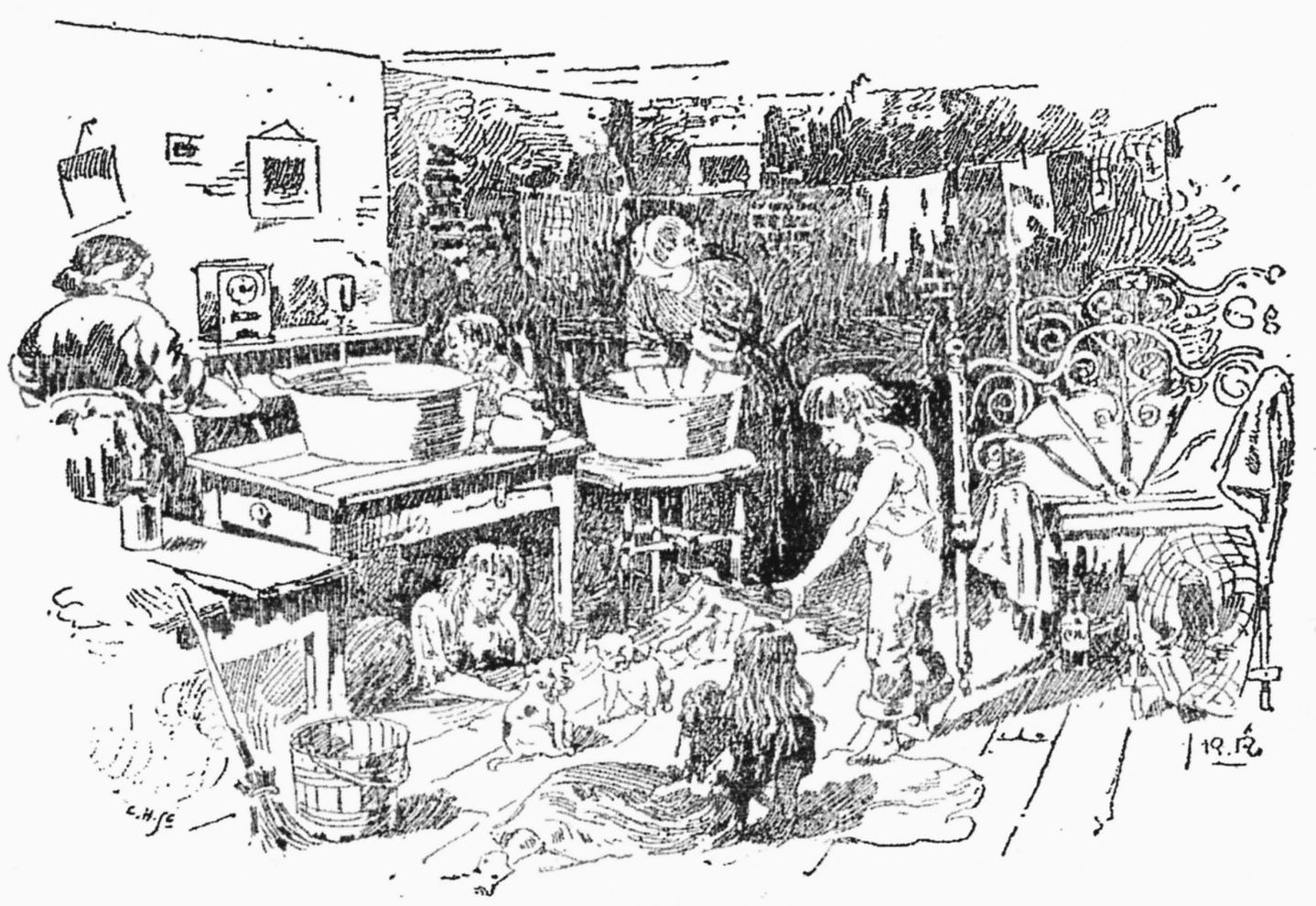These pictures were taken much later than you might think at an initial glance. This was the 1960s, and these women had inherited an original problem of the Boundary Street Estate: the London County Council had decreed that there was to be no clothes washing and drying within the flats themselves. And so the Estate’s central laundry on Montclare Street was where the huge weekly wash had to take place.
The laundry had 42 troughs, 42 drying horses, three centrifugal wringing machines, three box mangles and one roller mangle. In an annexe were 12 baths and a cold-water shower, for those flats with no bathroom. The whole lot was powered by a massive boiler which was kept fed by the Estate’s stoker.




The photographs above can be found in box 28.75 BOU at the London Metropolitan Archives, and copies can be purchased. LMA, 40 Northampton Road, London EC1. Tel: 020 7332 3820 https://www.cityoflondon.gov.uk/things-to-do/london-metropolitan-archives/Pages/default.aspx
Despite a major refurbishment of the facilities in 1946 the laundry appears to have remained a bit of a grim and forbidding place. It had been designed by LCC architect William Hynam, who was also responsible for Wargrave Buildings (1897) and Benson Buildings (1898) on the Estate.
The LCC stated at the time: “The Council, holding as it does a strong opinion that the washing and drying of clothes should not be done in the tenements themselves, has erected a steam laundry in a central position for the use of the tenants of the whole of the dwellings on the area. In addition to the apparatus for washing and drying clothes, which is of the most approved type, baths and reading and recreation rooms are provided in the laundry buildings.”
One of the aspects of slum housing that troubled medical men and sanitary inspectors was the ubiquitous washing line that festooned the tiny rooms (see drawing of an Old Nichol home below). It was believed that this contributed to the damp environments that were blamed for a huge range of illnesses, not least the chest, lung and throat diseases that were responsible for an estimated one-third of deaths each year in Bethnal Green at the end of the 19th century.
